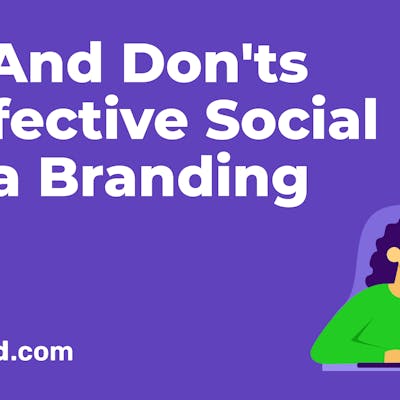Have you ever wondered how successful brands seem to stick in our minds? It’s not a coincidence; they cleverly use psychological tactics like classical conditioning to build their brand awareness. Think about those catchy jingles, memorable taglines, or distinctive logos that instantly come to mind when you hear certain brand names. “Hotels? Trivago.” “It’s not delivery. It’s DiGiorno.”
They have become ingrained in our brains through consistent branding across various media channels. But why are these associations so valuable, and how can you use them to enhance your own brand awareness?
In this blog, we’re here to give you a Simplified crash course on everything you need to know to get started. We’ll break down key terms, share unique ideas, provide creative examples, and even give you tactics to measure your results.
Whether you’re a branding novice or looking to level up your strategy, this guide has got you covered. So, let’s dive in and unlock the secrets to building a timeless brand!
Brand Recognition vs. Brand Awareness: What’s the Difference?

When it comes to branding, there’s a distinction between brand recognition and brand awareness. Let’s break it down:
Brand Recognition
Brand recognition is all about how easily people can identify your brand through symbols or products. It’s like when you see the Walt Disney font style and instantly know it’s associated with Disney, even if the words are different. Strong brand recognition relies on visual cues that create immediate associations.
Brand Awareness
Brand awareness goes beyond just recognizing a brand. It’s about how much information someone has about your brand. This includes designing your brand’s identity, knowing about your products, being aware of your reputation, and grasping your brand’s culture and values. When someone mentions your brand or sees your logo, they should feel a connection and have a clear sense of what your brand represents.
In essence, brand recognition is about identification, while brand awareness is about understanding and connecting with your brand on a deeper level. By cultivating both, you can create a powerful and lasting brand presence.
Cracking the Code of Brand Awareness & Visibility
Building brand awareness and visibility is a critical aspect of any successful marketing strategy. Let’s explore some key points and real-world examples that can help you achieve this goal:
1. Stay Consistent

Consistency is key when it comes to branding. Develop a strong and consistent brand identity across all marketing channels to create recognition and build trust. Take Coca-Cola, no matter where you go—the iconic red and white logo and typography are unforgettable. And it has been unchanged for decades!
2. Showcase your human-side

It’s undeniable that the end goal of every established brand is to market its products, reach its target audience, and make enough profit to flourish. However, the downside of such capitalizing in today’s world is losing empathy and genuine connections with your community.
Utilize social media platforms to connect with your audience and foster engagement. Respond to comments, initiate conversations, and encourage user-generated content. Starbucks does an excellent job of engaging its followers on Instagram, reposting user-generated photos, and using hashtags to create a sense of community.
Simplified Tip: Find out what your brand values, make it your central trait to connect with a specific audience, and build a community of like-minded people.
3. Share Unique Content
Creating valuable and relevant content is an effective way to engage your target audience and use your brand messaging. Share informative blog posts, engaging videos, influencer content, and podcasts that align with your brand’s values.
Patagonia, the outdoor clothing company, not only creates high-quality products but also actively engages in environmental and social issues. Their blog focuses on storytelling, conservation efforts, and adventures related to outdoor activities, resonating with their audience’s passion for nature and sustainability!
Related: 5 Reasons Building a Brand For Your Business Is Important
4. Go for Collaborations & Partnerships

Collaborating with complementary brands or participating in partnerships can expand your reach and enhance your brand credibility. Focus on creating unique experiences or innovative products that provide genuine value to the audience. Whether it’s a limited-edition product, a joint event, or a shared service, the collaboration should offer something distinct and memorable, leaving a lasting impression on consumers.
For example, the collaboration between Nike and Ben & Jerry’s in 2020. The Chunky Dunky has been esteemed as among the quirkiest brand collaborations that actually worked. The limited edition design worked perfectly to reach new customers for both parties. In turn, it resulted in increased visibility and positive brand marketing for both companies.
5. PR marketing works!
Securing press coverage and positioning your brand as a thought leader can significantly boost visibility. In an era of information overload and digital connectivity, PR helps brands cut through the noise, build trust, and connect with their target audience.
Tesla, the electric vehicle manufacturer, has effectively used PR to shape its brand image and generate media coverage. CEO Elon Musk’s charismatic presence and strategic use of social media have consistently kept Tesla in the public eye. Musk’s announcements, product unveilings, and controversies generate significant media attention, driving brand awareness and interest in Tesla’s innovative offerings.
Related: Design Tips For Brand Advertisements To Make You Stand Out
6. Do not overlook SEO
In the increasingly competitive online landscape of 2023, search engine optimization (SEO) plays a pivotal role in attracting organic traffic to websites. By optimizing your website and content to align with search engine algorithms, you can improve your chances of appearing higher in search engine results pages (SERPs) and capturing the attention of your target audience.
One brand that has successfully harnessed the power of SEO to enhance its visibility and drive bookings is Airbnb. As a leading online marketplace for accommodations, Airbnb strategically employs SEO techniques to rank higher in search results, particularly for travel-related queries.

Related: What are Meta Tags And How To Write Them For SEO Success
7. Online Advertising

In the digital age of 2023, online advertising has become a powerful tool for brands to increase their brand visibility and reach a targeted audience. With the ability to precisely target users based on demographics, interests, and online behaviors, online advertising platforms provide an opportunity to amplify brand awareness effectively.
By leveraging the extensive targeting options provided by Facebook ads, Airbnb has been able to reach users who have expressed interest in travel or specific destinations. They can target users based on their travel history, engagement with travel-related content, and even personal preferences like adventurous travel or family-friendly destinations. This precision targeting ensures that Airbnb’s ads are shown to the right audience, increasing the likelihood of capturing their attention, driving brand awareness, and ultimately driving bookings.
Analyzing Brand Awareness: Unleashing the Power of Data in 2023

Once you’ve executed your brand awareness strategy, it’s essential to evaluate its effectiveness and identify areas for improvement. Let’s explore a checklist of methods to conduct this analysis for your brand:
- Leverage Online Surveys: Online surveys remain a valuable tool for gathering customer opinions and feedback. Offer incentives such as discounts or exclusive content to encourage participation. Online surveys allow you to collect quantitative and qualitative data, providing insights into customer perceptions and preferences. Overall, you can get a good idea of your branding efforts!
- Track Website Traffic: Monitoring website traffic provides valuable insights into the effectiveness of your brand awareness campaigns. Utilize analytics tools while respecting privacy and user data to analyze audience trends and behaviors related to branded keywords. By understanding which channels drive the most traffic to your website and evaluating metrics like bounce rate and session duration, you can gauge the success of your brand awareness initiatives.
- Analyze Social Media Metrics: Social media platforms continue to be a powerful avenue for brand awareness. Leverage built-in analytics tools like Facebook for Business and Instagram reel analytics to gain deep insights into your social media followers. Evaluate metrics such as engagement rates, reach, hashtag performance, active hours, and demographics. These insights help identify what resonates with your audience and optimize your brand awareness campaigns.
- Monitor Brand Mentions and Search Volume: Beyond paid media campaigns, monitoring brand mentions and search volume provides valuable data on brand recognition and public perception. Keep track of the number of mentions your brand receives across various channels and platforms. Additionally, monitor search volume data to understand how often people are searching for your brand or related keywords. Higher brand recognition and awareness will naturally lead to increased conversations and search interest.
By leveraging these analysis methods and incorporating data-driven insights into your brand awareness strategy, you can refine your tactics and build brand loyalty in the dynamic landscape of 2023.
Related: 6 Personal Brand Statement Examples For Creative Inspiration
The Game-Changing Tool For Modern Brand Owners: Simplified!
.jpeg)
Say goodbye to scattered brand assets and inconsistent branding. Simplified enables you to effortlessly create stunning brand kits that encompass your logo, color palette, typography, and more. Maintain brand consistency across all platforms and leave a lasting impression on your audience.
With our content scheduling tools, you can focus on what matters most: connecting with your audience and driving brand awareness.
Simplified also empowers you with robust analytics and reporting tools to measure the impact of your brand awareness campaigns. Gain insights into audience engagement, reach, and conversion rates. Get ready to optimize your strategies and achieve remarkable results.
Elevate your brand awareness game and leave your competitors in awe.










